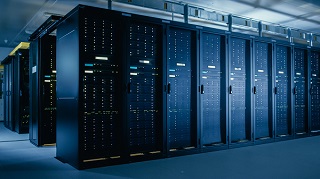Ransomware has evolved. What started as isolated incidents of cybercriminals encrypting files and demanding payment has turned into an organized, professionalized industry. Cybercriminals have even adopted cloud services and subscription-based platforms, much like legitimate businesses. Ransomware-as-a-Service (RaaS) platforms offer the tools, infrastructure, and support necessary for anyone to launch a ransomware campaign, even if they lack advanced technical skills. This makes ransomware an even bigger threat than ever before.
Data centers are the backbone of nearly every online activity, from streaming movies to managing global financial transactions. But what exactly is a data center, and why are they so critical? Simply put, a data center is a facility that houses the computing infrastructure powering modern businesses and technologies. It is the heart of data storage, processing, and distribution, enabling companies to deliver reliable services. Considering how important they are for supporting business operations, ensuring uptime, and enabling scalability, it is a good idea to know what is in a data center, how they work, and what types of data centers exist. This blog will cover these details, helping you understand this vital aspect of the modern digital era.
As businesses grow and their IT infrastructure needs evolve, decision-makers must decide where to house their data and applications. Two primary options emerge: building and maintaining a dedicated data center or utilizing colocation services. While both offer distinct advantages, understanding their differences is key to making an informed decision that aligns with business goals, cost structures, and operational needs.
In today’s interconnected economy, digital infrastructure stands as the backbone supporting the seamless operation of modern businesses. At its core, it encompasses the various physical and virtual technologies, systems, and services that enable data creation, storage, transmission, and processing; however, using digital infrastructure comes with its own set of challenges. These include navigating the complexities of integrating diverse systems, ensuring robust cybersecurity, managing costs, and maintaining scalability to meet growing demands. Despite these challenges, the benefits far outweigh the hurdles, which makes investing in digital infrastructure a strategic imperative for forward-thinking businesses. This article will delve into the components that make up digital infrastructure, its significance for businesses, and the challenges associated with its management.
Data is the driving force behind today’s modern enterprises. Companies store their customer’s data to gain insights into trends, acquire competitive advantages, personalize the user experience, create targeted marketing campaigns, and more. This data is easily the most critical asset for a business—but this also makes it the most targeted asset by cybercriminals. As threats against the confidentiality, integrity, and availability of data have become more advanced, the need for strong backup solutions has become essential. One of the most robust of these options is immutable storage, also known as immutable backups. In this article, we go over the numerous benefits this control offers for cybersecurity and other fields, and explain why it is such a useful strategic tool.
Cyberattacks have unfortunately become a regular occurrence for any organization with an online presence. Ransomware stands as one of the most dangerous types, able to cripple critical infrastructure and inflict heavy financial damage on businesses both large and small. Preventing these attacks requires not only knowledge of defensive techniques, but also an understanding of ransomware itself. This article reviews some common methods for detecting ransomware, understanding patterns that indicate an attack, and implementing controls to mitigate them.






